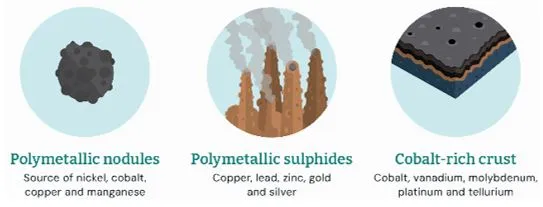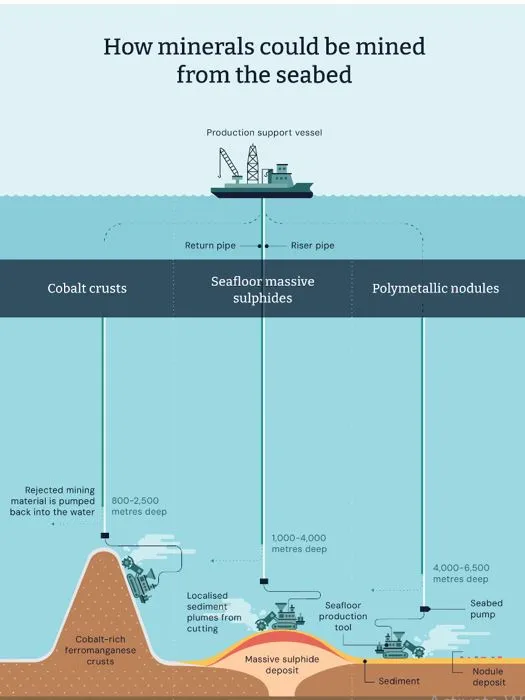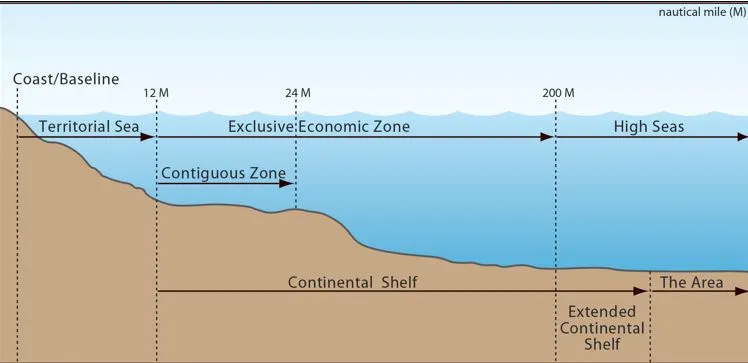

21st June 2024 (11 Topics)
Context
Deep-sea mining has emerged as a contentious issue garnering global attention due to its potential impact on marine ecosystems and its role in meeting the growing demand for critical minerals essential for modern technology.
What exactly is deep-sea mining?
- Deep-sea mining involves extracting mineral deposits from seabeds deeper than 200 meters below the ocean surface.
- These areas cover about 65% of the Earth’s surface and host diverse ecosystems and geological features, including mountains, canyons, and hydrothermal vents like those in the Mariana Trench.
- Targeted Commodity: Miners target critical minerals such as nickel, copper, cobalt, and manganese.
- These minerals are essential for modern technologies like smartphones, solar panels, and electric vehicles.
- They are found in polymetallic nodules, seafloor massive sulphide deposits, and cobalt-rich ferromanganese crusts.

- Coastal state rights: Countries have the rights to explore and exploit the natural resources of the seabed and subsoil within their territorial sea and exclusive economic zone (EEZ), which normally extends 200 nautical miles beyond a nation’s territorial sea.
- Nations can claim rights over even more seabed on the continental shelf under certain circumstances.
- Norway and the Cook Islands are among the nations actively pursuing mining in the waters under their control.
How might deep-sea mining affect the ocean?
- Mining could harm deep-sea habitats and species like octopuses and sponges by destroying their homes.
- Removing hydrothermal vents and crusts on seamounts would disrupt thriving animal communities.
- Sediment plumes from mining might be toxic and could smother downstream ecosystems, while noise and light pollution could disturb deep-sea creatures adapted to extreme conditions.

What is the International Seabed Authority?
- The International Seabed Authority (ISA), based in Jamaica, regulates mineral exploitation in international waters under the UN Convention on the Law of the Sea.
- It has issued exploration contracts for areas like the Clarion-Clipperton Zone in the Pacific Ocean but is still developing regulations for deep-sea mining.
- Pressure is mounting to finalize these rules amid debates over environmental impacts and the equitable use of ocean resources.
Fact BoxTerritorial Sea:
Exclusive Economic Zone (EEZ):
|



